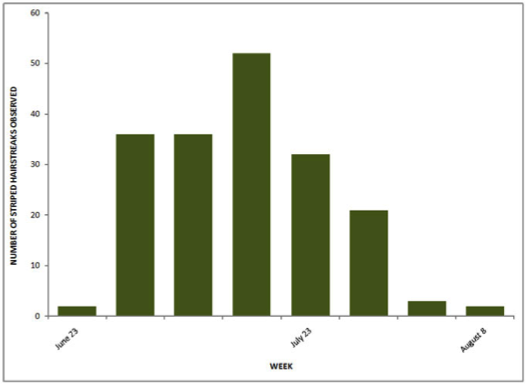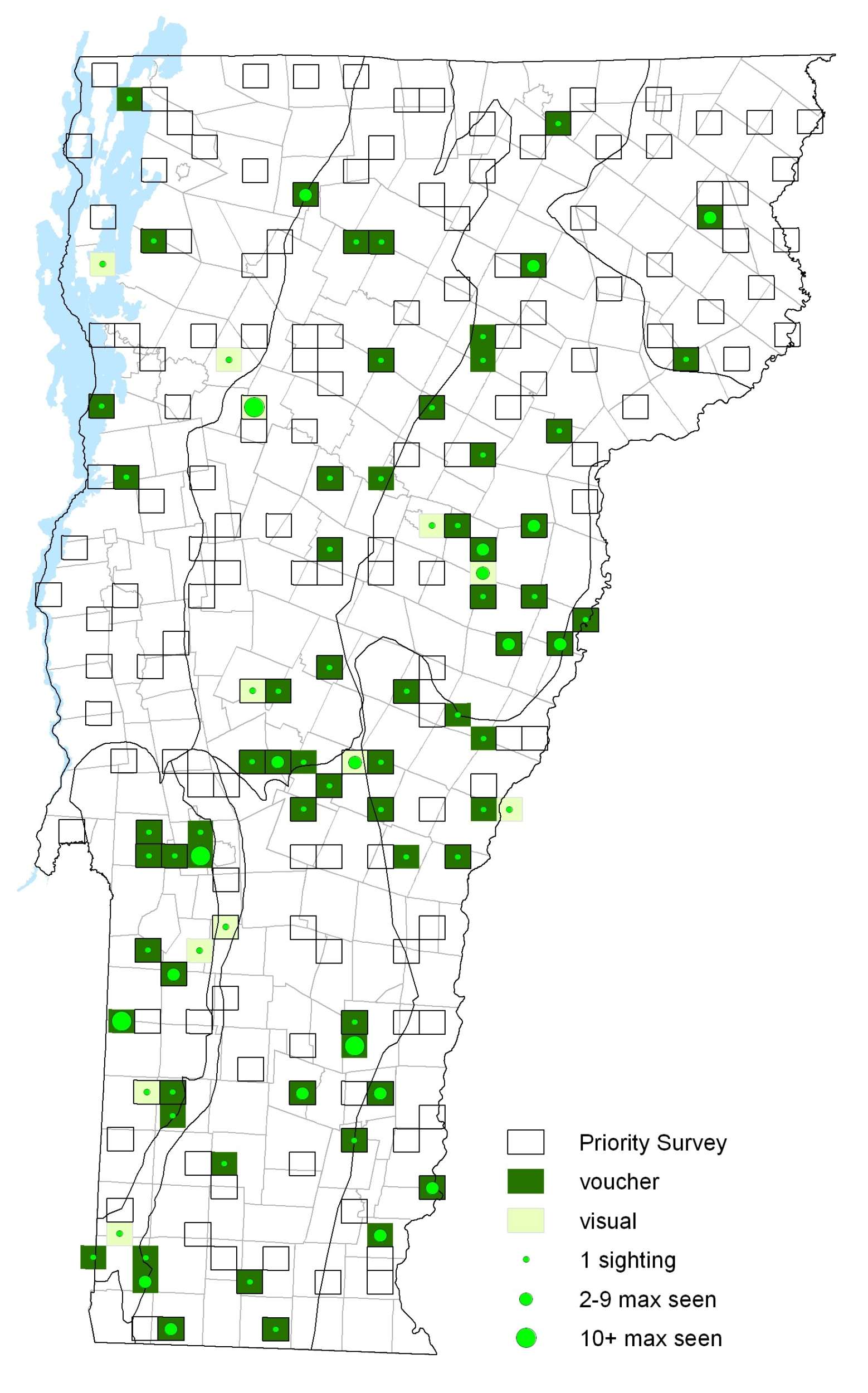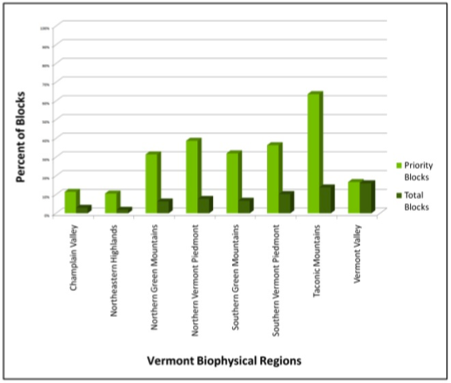|
Resident Conservation Status North American Range |
Unlike other hairstreaks, male Striped Hairstreaks rarely engage in aerial chases. Males perch on foliage up to six feet high to watch for females. Eggs are laid singly on twigs of hostplants and hatch the following spring. Caterpillars feed on buds, leaves, flowers, and young fruit.
Identification
Hindwing with 1 long and 1 short tail. Upperside dark brown; male with a long, oval spot along forewing costa. Underside of both wings with rows of widely separated white stripes; blue spot near tails topped with orange. Outer margin of hindwing indented above short tail.
Flight
One flight. Adults begin to eclose at the end of June. Extreme dates: 23 June 2004 in Rupert (D. Rolnick) and 9 August 2004 in Braintree (G. Hanisek).
Distribution and Habitat
Scudder considered it rare in New England. During VBS is was relatively common in Vermont, though less frequently in the Champlain Valley and the Northeast Highlands. Favored habitats are deciduous forest openings and edges, streamsides and shaded swamps. Adults nectar from milkweed (Asclepias), dogbane (Apocynum), goldenrod (Oligoneuron) and New Jersey Tea (Ceanothus americanus). Reported to use a wide variety of trees and shrubs as hostplants.







